Blog

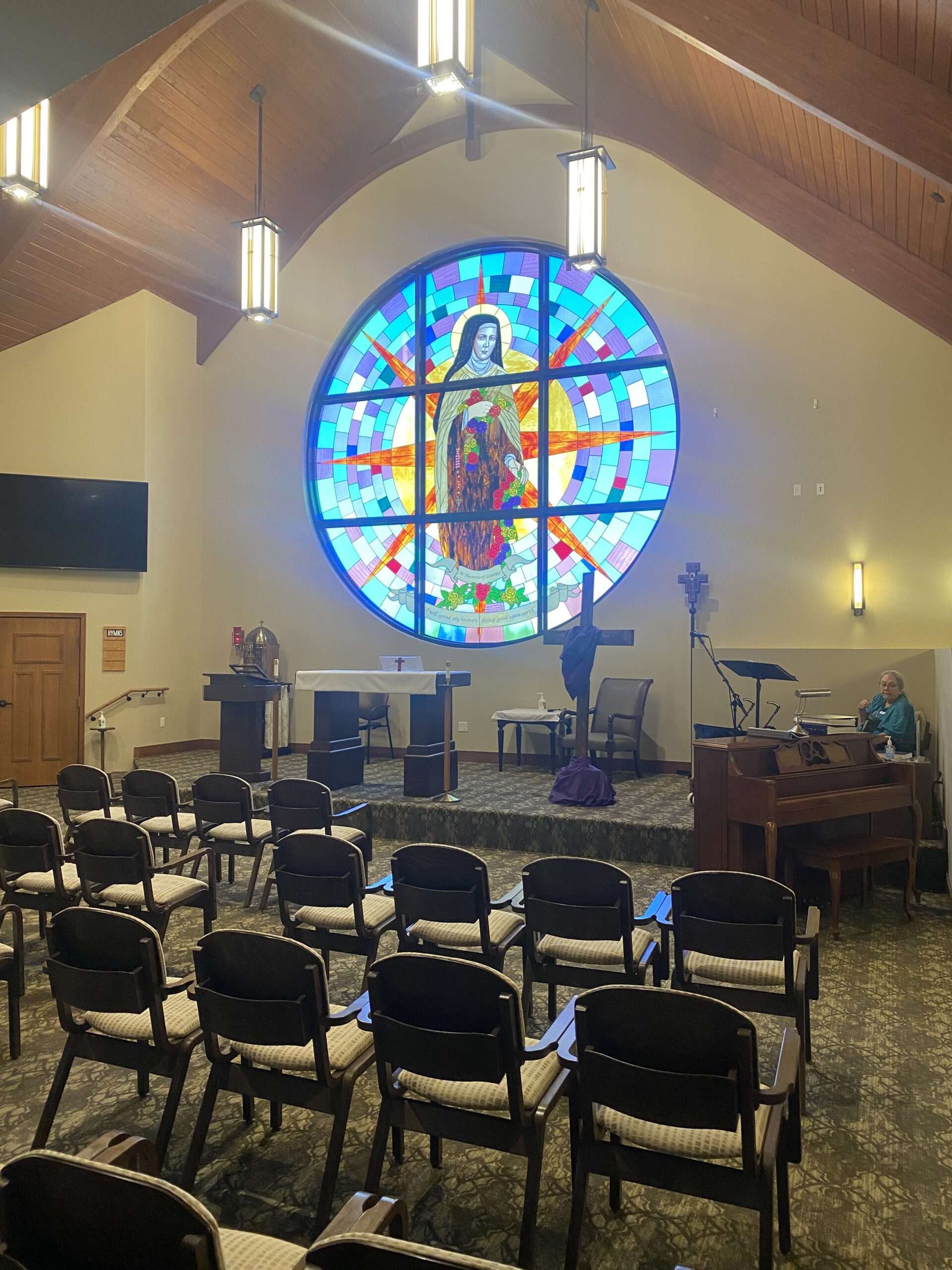
Today Monday April 8th 2024 A total solar eclipse crosses North America today, with parts of 15 U.S. states within the path of totality. Maps show where and when astronomy fans can see the big event as skies darken in the middle of the day on Monday, April 8.
The total eclipse will first appear along Mexico’s Pacific Coast at around 11:07 a.m. PDT, then travel across a swath of the U.S., from Texas to Maine, and into Canada.
About 31.6 million people live in the path of totality, the area where the moon will fully block out the sun, according to NASA. The path will range between 108 and 122 miles wide. An additional 150 million people live within 200 miles of the path of totality.
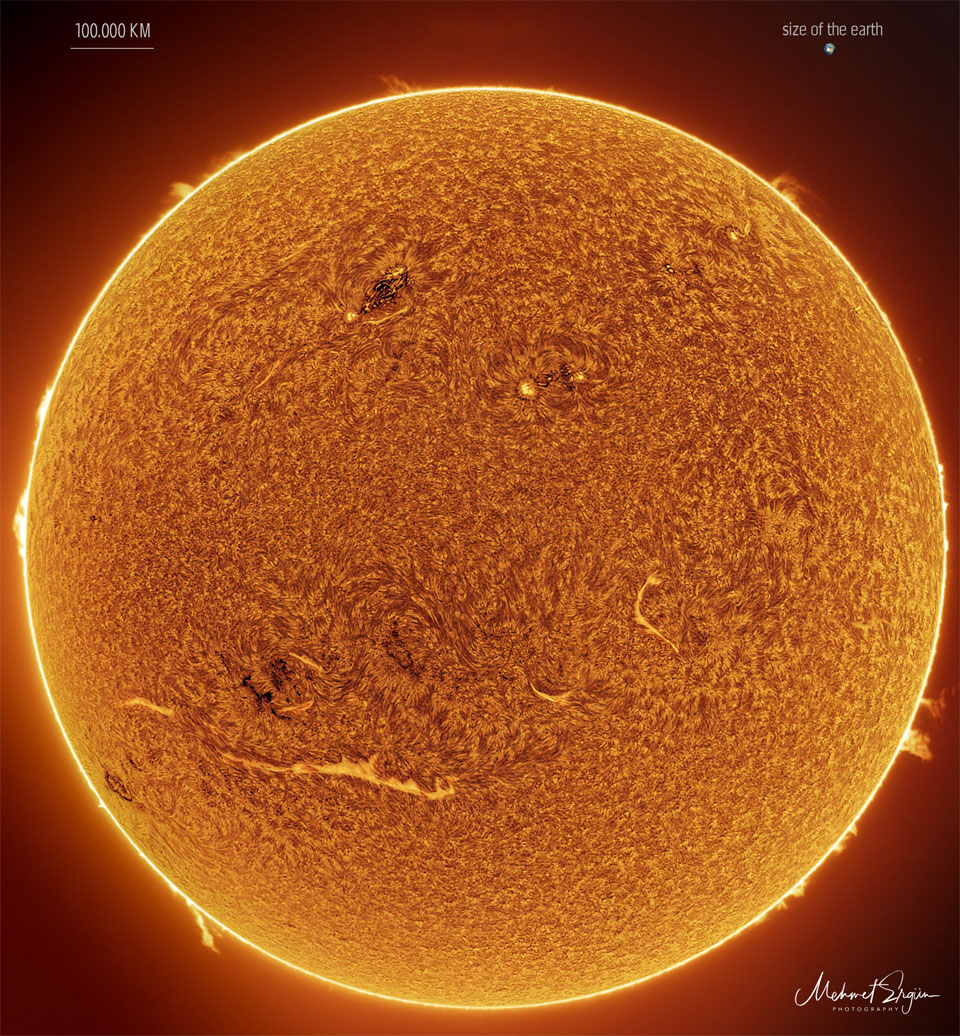
Santiago Jiménez Jr. (aka Santiago Henriquez Jiménez) (born April 8, 1944) is an American folk musicianwho received a National Heritage Fellowship in 2000 for lifetime achievement in traditional Tex-Mex/folk music, and a National Medal of Arts in 2016. He has been nominated for three Grammys.
His father, Santiago “Flaco” Jiménez Sr. was a pioneer of conjunto music and pioneered the use of stringed bass (tololoche) in his work. His older brother Leonardo “Flaco” Jiménez is considered by many the greatest and most famous Tejano accordionist ever. Santiago recorded his first album with his brother Flaco at age 17.Unlike Flaco, who is noted for mixing his music with many styles outside the Tejano mainstream, Santiago has emulated his father and stuck with the formulas of accordion, guitar, and vocals.
Santiago has recorded over 700 songs on numerous labels. He also founded his own label, Chief Records. Santiago has performed on multiple continents and at many festivals.In 2012, Santiago and Flaco played together at the Tejano Conjunto Festival in San Antonio, the first time they were on the same stage since 1982.
more...Paul Jeffrey (April 8, 1933 – March 20, 2015) was an American jazz tenor saxophonist, arranger, and educator. He was a member of Thelonious Monk‘s regular group from 1970–1975, and also worked extensively with other musicians such as Charles Mingus, Dizzy Gillespie,[3] Clark Terry, Lionel Hamptonand B.B. King.
Born in New York City, Jeffrey attended Kingston High School. After graduating in 1951, he completed a Bachelor of Science degree in music education at Ithaca College in 1955. He spent the late 1950s touring with bands led by Illinois Jacquet, Elmo Hope, Big Maybelle, and Wynonie Harris. From 1960 to 1961, Jeffrey toured the US with B.B. King, after which he worked as a freelance musician in the New York City area and toured with bands led by Howard McGhee, Clark Terry, and Dizzy Gillespie.
more...Carmen Mercedes McRae (April 8, 1920 – November 10, 1994) was an American jazz singer. She is considered one of the most influential jazz vocalists of the 20th century and is remembered for her behind-the-beat phrasing and ironic interpretation of lyrics.
McRae was born in Harlem, New York City, United States. Her father, Osmond, and mother, Evadne (Gayle) McRae, were immigrants from Jamaica. She began studying piano when she was eight, and the music of jazz greats such as Louis Armstrong and Duke Ellington filled her home. When she was 17 years old, she met singer Billie Holiday. As a teenager McRae came to the attention of Teddy Wilson and his wife, the composer Irene Kitchings. One of McRae’s early songs, “Dream of Life”, was, through their influence, recorded in 1939 by Wilson’s long-time collaborator Billie Holiday. McRae considered Holiday to be her primary influence.
In her late teens and early twenties, McRae played piano at Minton’s Playhouse, sang as a chorus girl, and worked as a secretary. It was at Minton’s where she met trumpeter Dizzy Gillespie, bassist Oscar Pettiford, and drummer Kenny Clarke, had her first important job as a pianist with Benny Carter’s big band (1944), worked with Count Basie (1944) and under the name “Carmen Clarke” (having married Clarke) made her first recording as pianist with the Mercer Ellington Band (1946–47). But it was while working in Brooklynthat she came to the attention of Decca’s Milt Gabler. Her five-year association with Decca yielded 12 LPs.
more...NGC 514 is an intermediate spiral galaxy, located about 95.9 million light-years away from Earth in the constellation of Pisces (the Fishes), while it is receding from us at approximately 2,472 kilometers per second. It was discovered on October 16, 1784 by the German-British astronomer William Herschel.
This almost face-on galaxy has loosely wound spiral arms and a very bright center. It has a so called H II nucleus, meaning that NGC 514 has intense current bursts of star formation in its center.
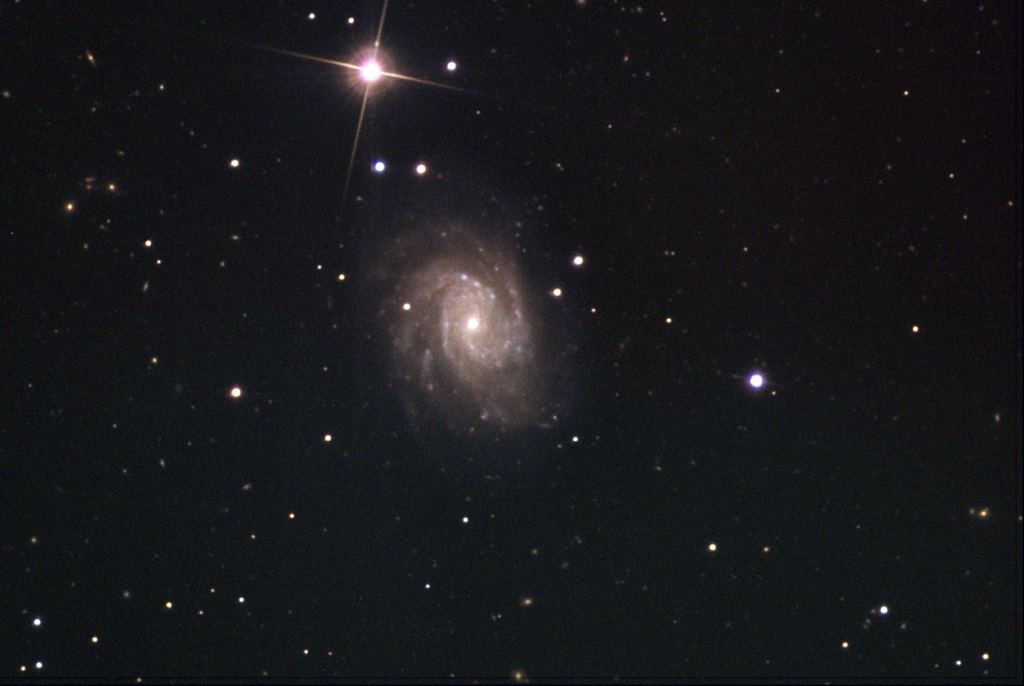
Processed with MaxIm DL
Frederick Dewayne Hubbard (April 7, 1938 – December 29, 2008) was an American jazz trumpeter.
He played bebop, hard bop, and post-bop styles from the early 1960s onwards. His unmistakable and influential tone contributed to new perspectives for modern jazz and bebop.
Hubbard started playing the mellophone and trumpet in his school band at Arsenal Technical High Schoolin Indianapolis, Indiana. Trumpeter Lee Katzman, former sideman with Stan Kenton, recommended that he begin taking trumpet lessons at the Arthur Jordan Conservatory of Music (now the Jordan College of the Arts at Butler University) with Max Woodbury, principal trumpeter of the Indianapolis Symphony Orchestra. In his teens, Hubbard worked locally with brothers Wes and Monk Montgomery, and worked with bassist Larry Ridley and saxophonist James Spaulding.
In 1958, at the age of 20, he moved to New York and began playing with some of the best jazz players of the era, including Philly Joe Jones, Sonny Rollins, Slide Hampton, Eric Dolphy, J. J. Johnson, and Quincy Jones. On June 19, 1960, Hubbard made his first record as a leader, Open Sesame, at the beginning of his contract with Blue Note Records, with saxophonist Tina Brooks, pianist McCoy Tyner, bassist Sam Jones, and drummer Clifford Jarvis. Six days later he returned the favor to Brooks and recorded with him on True Blue.
more...Ravi Shankar KBE born Robindro Shaunkor Chowdhury,sometimes spelled as Rabindra Shankar Chowdhury; 7 April 1920 – 11 December 2012) was an Indian sitarist and composer. A sitar virtuoso, he became the world’s best-known expert of North Indian classical music in the second half of the 20th century, and influenced many musicians in India and throughout the world. Shankar was awarded India’s highest civilian honour, the Bharat Ratna, in 1999.
Shankar was born to a Bengali family in India, and spent his youth as a dancer touring India and Europe with the dance group of his brother Uday Shankar. At age 18, he gave up dancing to pursue a career in music, studying the sitar for seven years under court musician Allauddin Khan. After finishing his studies in 1944, Shankar worked as a composer, creating the music for the Apu Trilogy by Satyajit Ray, and was music director of All India Radio, New Delhi, from 1949 to 1956. He was nominated for the Academy Award for Best Original Score for scoring the blockbuster Gandhi (1982).
In 1956, Shankar began to tour Europe and the Americas playing Indian classical music and increased its popularity there in the 1960s through teaching, performance, and his association with violinist Yehudi Menuhin and Beatles guitarist George Harrison. His influence on Harrison helped popularize the use of Indian instruments in Western pop music in the latter half of the 1960s. Shankar engaged Western music by writing compositions for sitar and orchestra and toured the world in the 1970s and 1980s. From 1986 to 1992, he served as a nominated member of Rajya Sabha, the upper chamber of the Parliament of India. He continued to perform until the end of his life. He was a recipient of numerous prestigious musical accolades, including a Polar Music Prize and four Grammy Awards, including Album of the Year for The Concert for Bangladesh in 1973.
more...Ramón “Mongo” Santamaría Rodríguez (April 7, 1917 – February 1, 2003) was a Cuban percussionist and bandleader who spent most of his career in the United States. Primarily a conga drummer, Santamaría was a leading figure in the pachanga and boogaloo dance crazes of the 1960s. His biggest hit was his rendition of Herbie Hancock‘s “Watermelon Man“, which was inducted into the Grammy Hall of Fame in 1998. From the 1970s, he recorded mainly salsa and Latin jazz, before retiring in the late 1990s.
Mongo learned to play the congas as an amateur rumba musician in the streets of Havana. He then learned the bongos from Clemente “Chicho” Piquero and toured with various successful bands such as the Lecuona Cuban Boys and Sonora Matancera. In 1950, he moved to New York City, where he became Tito Puente‘s conguero and in 1957 he joined Cal Tjader‘s band. He then formed his own charanga, while at the same time recording some of the first rumba and Santería music albums. By the end of the decade, he had his first pachanga hit, “Para ti”. He then became a pioneer of boogaloo with “Watermelon Man” and later signed record deals with Columbia, Atlantic and Fania. He collaborated with salsa artists and became a member of the Fania All-Stars, often showcasing his conga solos against Ray Barretto. In his later years, Santamaría recorded mostly Latin jazz for Concord Jazz and Chesky Records.
more...Billie Holiday (born Eleanora Fagan; April 7, 1915 – July 17, 1959 Philadelphia, PA) was an American jazz and swing music singer. Nicknamed “Lady Day” by her friend and music partner, Lester Young, Holiday made a significant contribution to jazz music and pop singing. Her vocal style, strongly influenced by jazz instrumentalists, inspired a new way of manipulating phrasing and tempo. She was known for her vocal delivery and improvisational skills.
After a turbulent childhood, Holiday began singing in nightclubs in Harlem, where she was heard by producer John Hammond, who liked her voice. She signed a recording contract with Brunswick in 1935. Collaborations with Teddy Wilson produced the hit “What a Little Moonlight Can Do“, which became a jazz standard. Throughout the 1930s and 1940s, Holiday had mainstream success on labels such as Columbiaand Decca. By the late 1940s, however, she was beset with legal troubles and drug abuse. After a short prison sentence, she performed at a sold-out concert at Carnegie Hall. She was a successful concert performer throughout the 1950s with two further sold-out shows at Carnegie Hall. Because of personal struggles and an altered voice, her final recordings were met with mixed reaction but were mild commercial successes. Her final album, Lady in Satin, was released in 1958. Holiday died of heart failure on July 17, 1959, at age 44.
Holiday won four Grammy Awards, all of them posthumously, for Best Historical Album. She was inducted into the Grammy Hall of Fame and the National Rhythm & Blues Hall of Fame. In 2000, she was also inducted into the Rock & Roll Hall of Fame as an early influence; their website states that “Billie Holiday changed jazz forever”. She was named one of the 50 Great Voices by NPR; and was ranked fourth on the Rolling Stone list of “200 Greatest Singers of All Time” (2023). Several films about her life have been released, most recently The United States vs. Billie Holiday (2021).
more...Karibuni performing Wingspan Life Resources (https://wingspanlife.org/) Saturday April 6th 2024 11am with Joe Shalita, MP, Edna Stevens and mick laBriola. This is the group of years ago with Siama Matuzungidi, Serge Akou, Lidia Wokolo Sanguma and mick Bamboula
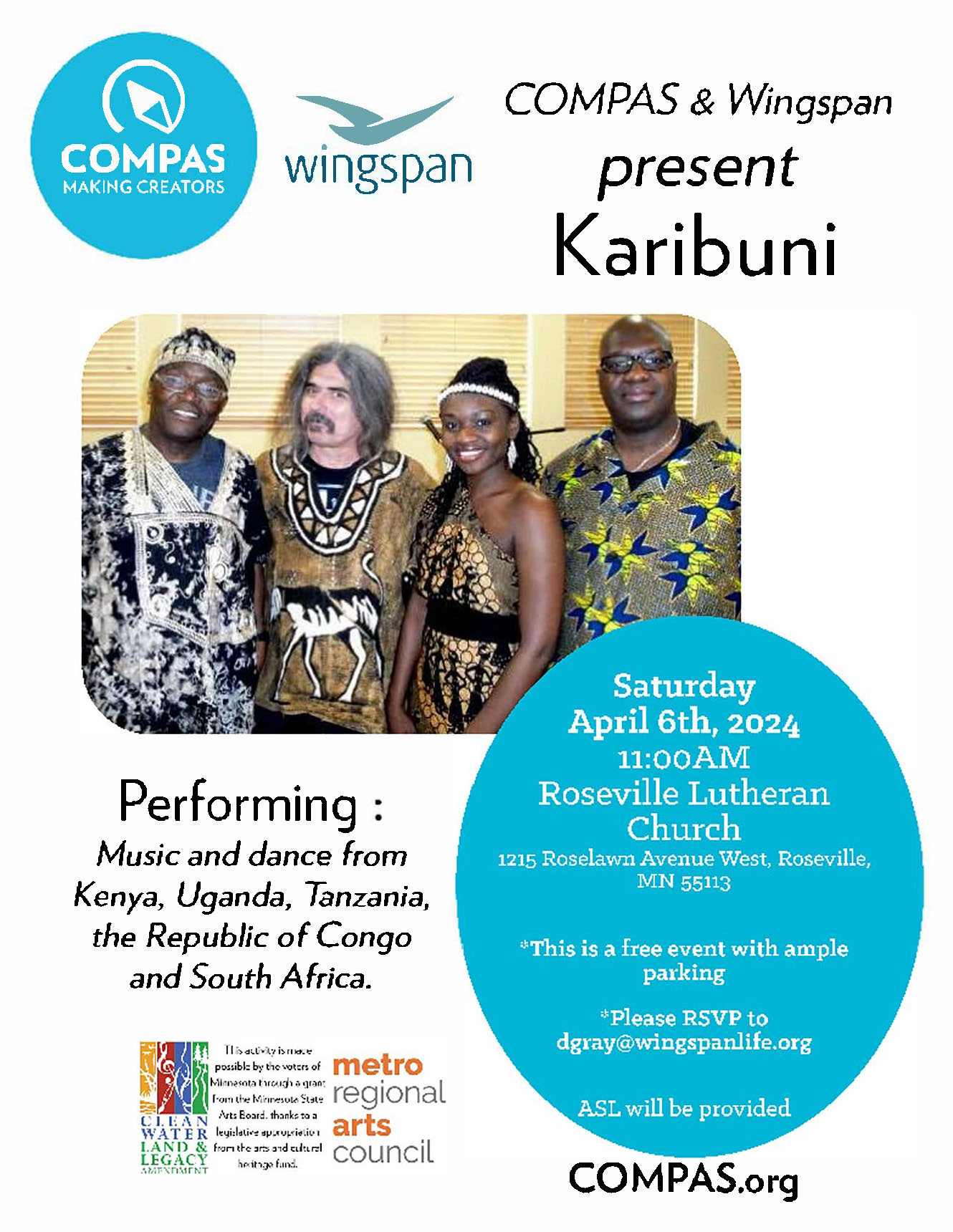
The arms of a grand design spiral galaxy 60,000 light-years across are unwound in this digital transformation of the magnificent 2005 Hubble Space Telescope portrait of M51. In fact, M51 is one of the original spiral nebulae, its winding arms described by a mathematical curve known as a logarithmic spiral, a spiral whose separation grows in a geometric way with increasing distance from the center. Applying logarithms to shift the pixel coordinates in the Hubble image relative to the center of M51 maps the galaxy’s spiral arms into diagonal straight lines. The transformed image dramatically shows the arms themselves are traced by star formation, lined with pinkish starforming regions and young blue star clusters. Companion galaxy NGC 5195 (top) seems to alter the track of the arm in front of it though, and itself remains relatively unaffected by this unwinding of M51. Also known as the spira mirabilis, logarthimic spirals can be found in nature on all scales. For example, logarithmic spirals can also describe hurricanes, the tracks of subatomic particles in a bubble chamber and, of course, cauliflower.
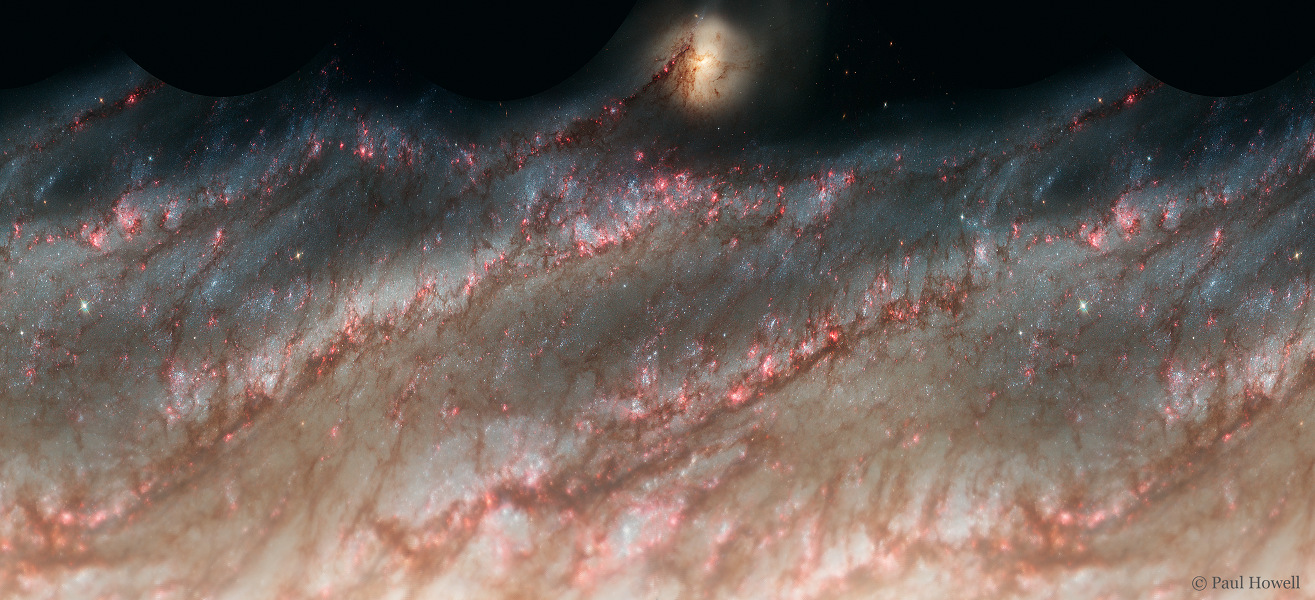
Beverly “Guitar” Watkins (April 6, 1939 – October 1, 2019) was an American blues guitarist. Sandra Pointer-Jones wrote, “Beverly Watkins is a pyrotechnic guitar maven whose searing, ballistic attacks on the guitar have become allegorical tales within the blues community.” George Varga, reviewing her debut CD, observed that Watkins “sings and plays with enough poise and verve to make musicians half her age or younger consider alternative means of employment.”
Watkins was born in Atlanta, Georgia, in 1939. When she was about 12 years old, her family moved to Commerce, Georgia. She began playing music in school, and, in high school, she played bass for a band called Billy West Stone and the Down Beats.[4] Around the year 1959, she was introduced to Piano Red, who had a daily radio show on WAOK, and she subsequently joined Piano Red and the Meter-tones, who played in a number of towns in the Atlanta area, and then Atlanta clubs such as the Magnolia Ballroom and the Casino, before starting to tour throughout the southeast, primarily at colleges. About the time the group renamed itself Piano Red and the Houserockers, they started touring nationally.
more...John Paul Pizzarelli Jr. (born April 6, 1960) is an American jazz guitarist and vocalist. He has recorded over twenty solo albums and has appeared on more than forty albums by other recording artists, including Paul McCartney, James Taylor, Rosemary Clooney; his father, jazz guitarist Bucky Pizzarelli; and his wife, singer Jessica Molaskey.
The son of swing guitarist Bucky Pizzarelli, John Pizzarelli was born in Paterson, New Jersey. He started on guitar when he was six and played trumpet through his college years. He attended Don Bosco Preparatory High School, an all-boys Catholic school. In his teens, he performed with Benny Goodman, Les Paul, Zoot Sims, Slam Stewart, and Clark Terry.
Pizzarelli attended the University of Tampa and William Paterson University, though he has said that his most important teacher was his father from 1980 to 1990. During the 1980s, he established himself as a jazz guitarist and a vocalist. He released his debut solo album, I’m Hip (Please Don’t Tell My Father), in 1983.
more...Randolph Edward “Randy” Weston (April 6, 1926 – September 1, 2018) was an American jazz pianist and composer whose creativity was inspired by his ancestral African connection.
Weston’s piano style owed much to Duke Ellington and Thelonious Monk, whom he cited in a 2018 video as among pianists he counted as influences, as well as Count Basie, Nat King Cole and Earl Hines.Beginning in the 1950s, Weston worked often with trombonist and arranger Melba Liston.
Described as “America’s African Musical Ambassador”, Weston once said: “What I do I do because it’s about teaching and informing everyone about our most natural cultural phenomenon. It’s really about Africa and her music.”
Randolph Edward Weston was born on April 6, 1926, to Vivian (née Moore) and Frank Weston and was raised in Brooklyn, New York, where his father owned a restaurant. His mother was from Virginia and his father was of Jamaican–Panamanian descent, a staunch Garveyite, who passed self-reliant values to his son. Weston studied classical piano as a child and took dance lessons. He graduated from Boys High School in Bedford-Stuyvesant, where he had been sent by his father because of the school’s reputation for high standards. Weston took piano lessons from someone known as Professor Atwell who, unlike his former piano teacher Mrs Lucy Chapman, allowed him to play songs outside the classical music repertoire.
more...Charlie Rouse (April 6, 1924 – November 30, 1988) was an American hard bop tenor saxophonist and flautist. His career is marked by his collaboration with Thelonious Monk, which lasted for more than ten years.
Rouse was born in Washington, D.C., United States. At first he worked with the clarinet, before turning to the tenor saxophone.
Rouse began his career with the Billy Eckstine Orchestra in 1944, followed by the Dizzy Gillespie Big Band in 1945, the Duke Ellington Orchestra from 1949 to 1950, the Count Basie Octet in 1950, Bull Moose Jackson And His Buffalo Bearcats in 1953, and the Oscar Pettiford Sextet in 1955. He made his recording debut with Tadd Dameron in 1947, and in 1957 made a notable album with Paul Quinichette.
He was a member of Thelonious Monk‘s quartet from 1959 to 1970. In the 1980s he was a founding member of the group Sphere, which began as a tribute to Monk.
Charlie Rouse died from lung cancer on November 30, 1988, at University Hospital in Seattle at the age of 64.
more...More Posts
- World Music with Paco Soto
- Daily Roots with Amy Winehouse
- The Cosmos with RCW 57
- Marcus Miller Day
- Kenny Drew Jr Day
- Junior Walker Day
- World Music with Amadu Bansang Jobarteh
- Daily Roots with Sly & Robbie
- The Cosmos with NGC 6164
- Attila Zoller Day
- Wild Bill Moore Day
- Don Cheatham Day
- World Music with Slonovski Bal
- Daily Roots with Playing for Change
- The Cosmos with NGC 660
- Peter Beets Day
- Chick Corea Day
- World Music with Jacky Molard
- Daily Roots with Steel Pulse
- The Cosmos with GGD 27